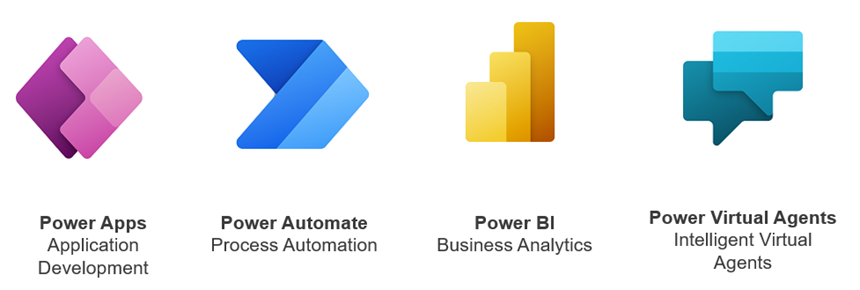Hello, Power Platform Devs! In this blog post, I’d like to highlight my learning experience with the AIS HUB Team that you can take advantage of to get started with Power Platform fundamentals.
What is the HUB Team?
The AIS Cloud Acceleration Hub (HUB) is a dedicated team of AIS consultants organized to help our project teams deliver successful cloud solutions. The HUB team consolidates knowledge and experience to provide rapid research and guidance services for AIS delivery teams at no additional cost to our customers.
What is Power Platform?
Power Platform is a business application platform that allows users to create and deploy applications with the help of its four components.
Components of Power Platform
Power Apps
Power Apps provides a rapid low code development environment for building custom apps for business needs.
Key features:
- Low/no-code platform for building apps
- Work with data where it lives.
- Add artificial intelligence to your app with no code
Types of Power Apps:
- Canvas Apps – Canvas apps are a great option when you want to build an app from a blank canvas. You start by choosing the screen size: tablet or mobile
- Model-Driven Apps – Model-driven app design is a component-focused approach to app development.
- Portals – Portals bring the power of no-code solutions to building external-facing websites. You can build an anonymous or authenticated website through the Power Apps interface that allows users to interact with data held in Dataverse.
PARTNER OF THE YEAR FINALIST
AIS was recognized as a Finalist for the Microsoft 2021 Power Apps and Power Automate Partner of the Year Award.
Power Automate
Power Automate lets users create automated workflows between applications and services. It helps automate repetitive business processes such as communication, data collections, and decision approvals.
Key features:
- Automated workflows between applications and services
- Process Automation
- Provides Saved Templates
Types of flows:
- Event-Driven Flows – These are flows that you build with a trigger and then one or more actions. There are many triggers and actions available, thanks to the existing connectors.
- Business Process Flows – These flows are built to augment the experience when using Model-driven apps and the Dataverse. Use these to create a guided experience in your Model-driven apps.
- Desktop Flows – These robotic process automation (RPA) flows allow you to record yourself performing actions on your desktop or within a web browser.
Beyond simple workflows, Power Automate can send reminders on past due tasks, move business data between systems on a schedule, talk to more than 275 data sources or any publicly available API.
INTERNAL POWER PLATFORM HACKATHON
AIS held an internal hackathon for Microsoft Power Platform to expose our team to the platform, concepts, approaches through hands-on experience.
Power BI
Power BI (Business Intelligence) is a business analytics service that delivers insights for analyzing data. It can share those insights through data visualizations which make up reports and dashboards to enable fast, informed decisions.
Key features:
- Business analytics service that delivers insights for analyzing data. It helps with the following:
- Connect to Data
- Transform Data
- Visualize Data
Building Blocks of Power BI:
- Datasets
- Reports
- Dashboards
Power BI lets you easily connect to your data sources, clean, and model your data without affecting the underlying source, visualize (or discover) what’s important, and share that with anyone or everyone you want.
Power Virtual Agents
Power Virtual Agents enables anyone to create powerful chatbots using a guided, no-code graphical interface without the need for data scientists or developers.
Key features:
- Create chatbots using a guided, no-code graphical interface
Minimizes the IT effort required to deploy and maintain a custom solution. We can perform the following tasks:
- Create a chatbot
- Test a chatbot
- Publish a chatbot
- Analyze a chatbot
Hands-on Links:
-
- Now you have read about the fundamentals, you understand it in theory, now it’s time to put this new knowledge into practice. You can use the below resources and discover more:
- Power App – https://make.powerapps.com/
- Power Automate – https://us.flow.microsoft.com/en-us/
- Power BI – https://powerbi.microsoft.com/en-us/desktop/
- Power Virtual Agents – https://powerva.microsoft.com/
Conclusion
Power Platform features offer several features. Some of my favorites on Power Platform are AI Builder, which allows users and developers to add AI capabilities to the workflows. Microsoft Dataverse lets users securely store and manage data from multiple sources, and Connectors enable you to connect to apps and data, and devices in the cloud. We will discuss these in detail in the next blog. Stay tuned!







